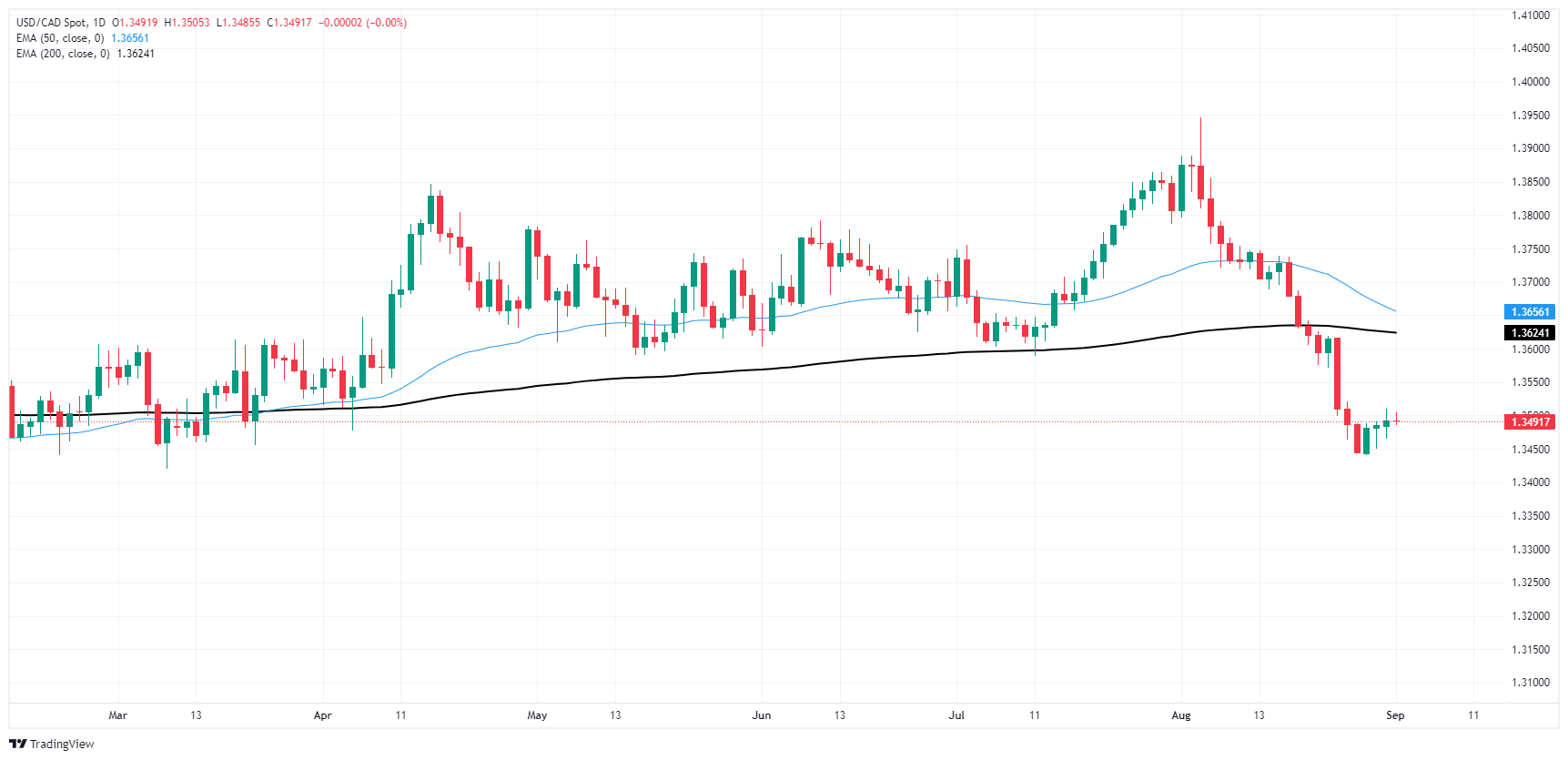- The Canadian Dollar found little reason to move at the start of the new trading week.
- Despite a soft start, there are many key events coming up in the week.
- The BoC is expected to cut rates again, with US NFP employment data due out on Friday.
The Canadian Dollar (CAD) hovered in the mid-range on Monday, starting the new trading week with a notable lack of momentum. Canadian and US markets are closed for the Labor Day holiday, but key calendar events for both will keep USD/CAD traders close to their terminals.
The Bank of Canada (BoC) is set to deliver another rate decision this week, with markets widely anticipating another quarter-point cut. On the US side of the data docket, US Purchasing Managers’ Index (PMI) figures are spread out throughout the week, with the economic calendar set to culminate in another fresh round of US Non-Farm Payrolls figures.
Daily summary of market drivers
- Canada and the US are off on Monday for holidays, market flows remain restricted.
- The BoC is expected to cut rates another quarter point to 4.25%.
- With the current cut, rate markets expect the Canadian interest rate to be close to 3.75% by the end of the year.
- The US ADP employment change scheduled for Thursday represents the first hurdle on the road to the release of US NFP jobs data on Friday.
- This week represents the last major labor market update for the US economy before the Fed delivers its long-awaited rate decision on September 18.
Canadian Dollar Price Forecast
Monday’s holiday for the Canadian Dollar (CAD) and the US Dollar (USD) leaves USD/CAD bids in a sort of limbo. Price action has been hampered by holiday market flows and the pair is trading near the 1.3500 zone.
The CAD’s four-week bullish streak against the Dollar appears to have fizzled out. The Canadian Dollar recorded a 3.62% trough-to-peak rally against the USD, rising from 22-month lows to five-month highs in four weeks. The near-term action is again in favor of the Dollar bulls as USD/CAD bids look set for a fresh attempt towards the 200-day exponential moving average (EMA) at 1.3616.
USD/CAD daily chart
The Canadian Dollar
The key factors determining the Canadian dollar (CAD) are the level of interest rates set by the Bank of Canada (BoC), the price of oil, Canada’s main export, the health of its economy, inflation and the trade balance, which is the difference between the value of Canadian exports and its imports. Other factors include market sentiment, i.e. whether investors are betting on riskier assets (risk-on) or looking for safe assets (risk-off), with risk-on being positive for the CAD. As its largest trading partner, the health of the US economy is also a key factor influencing the Canadian dollar.
The Bank of Canada (BoC) exerts significant influence over the Canadian dollar by setting the level of interest rates that banks can lend to each other. This influences the level of interest rates for everyone. The BoC’s main objective is to keep inflation between 1% and 3% by adjusting interest rates up or down. Relatively high interest rates are generally positive for the CAD. The Bank of Canada can also use quantitative easing and tightening to influence credit conditions, with the former being negative for the CAD and the latter being positive for the CAD.
The price of oil is a key factor influencing the value of the Canadian dollar. Oil is Canada’s largest export, so the price of oil tends to have an immediate impact on the value of the CAD. Generally, if the price of oil rises, the CAD rises as well, as aggregate demand for the currency increases. The opposite occurs if the price of oil falls. Higher oil prices also tend to lead to a higher probability of a positive trade balance, which also supports the CAD.
Although inflation has traditionally always been considered a negative factor for a currency, as it reduces the value of money, the opposite has actually occurred in modern times, with the relaxation of cross-border capital controls. Higher inflation typically leads central banks to raise interest rates, which attracts more capital inflows from global investors looking for a lucrative place to store their money. This increases demand for the local currency, which in Canada’s case is the Canadian dollar.
The released macroeconomic data measures the health of the economy and can have an impact on the Canadian Dollar. Indicators such as GDP, manufacturing and services PMIs, employment and consumer confidence surveys can influence the direction of the CAD. A strong economy is good for the Canadian Dollar. Not only does it attract more foreign investment, but it can encourage the Bank of Canada to raise interest rates, which translates into a stronger currency. However, if the economic data is weak, the CAD is likely to fall.
Source: Fx Street
I am Joshua Winder, a senior-level journalist and editor at World Stock Market. I specialize in covering news related to the stock market and economic trends. With more than 8 years of experience in this field, I have become an expert in financial reporting.







